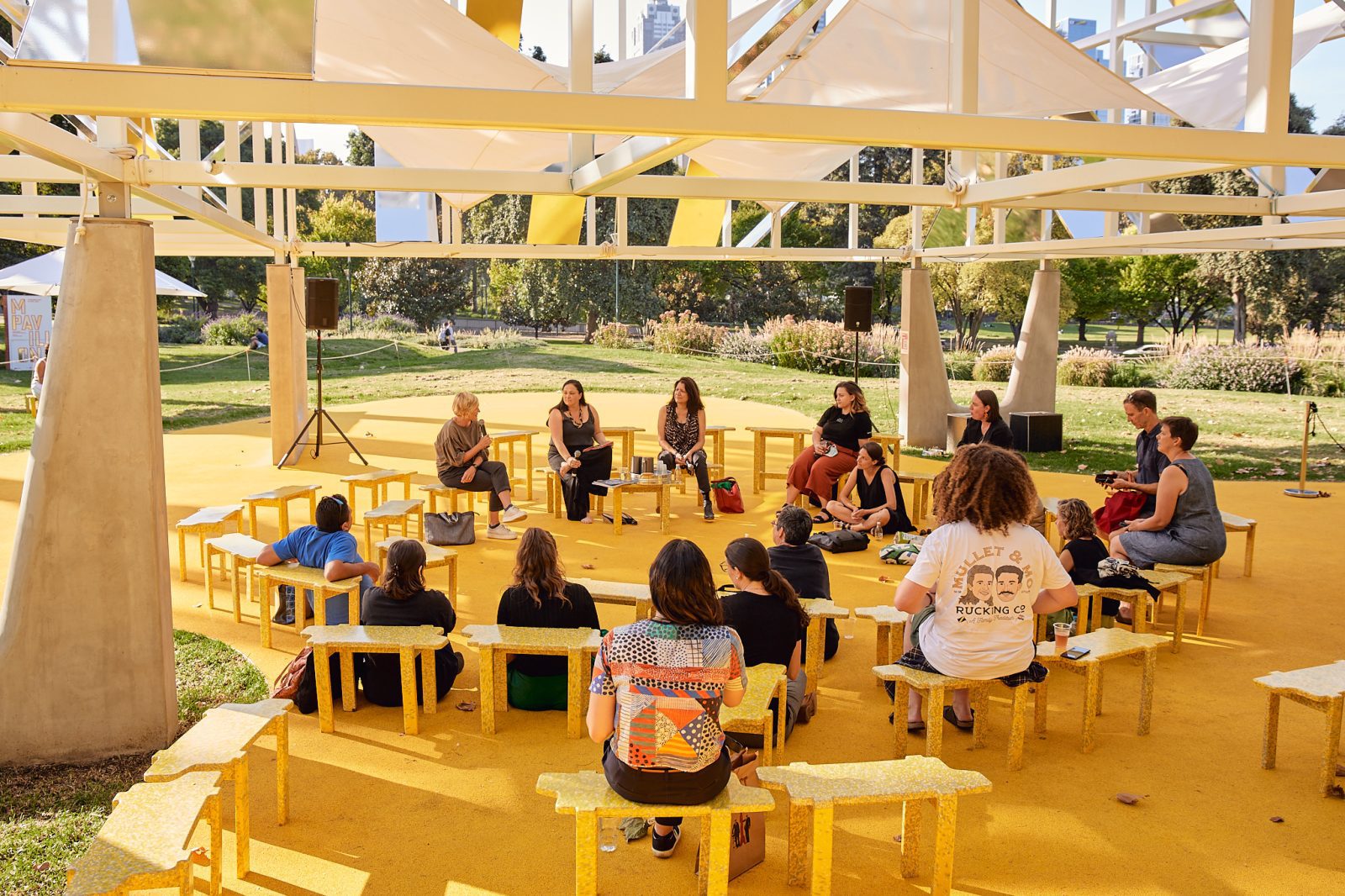7 BLAKitecture talks to revisit this week

This week, we’re looking back on the past seven seasons of the BLAKitecture forum, curated by Sarah Lynn Rees and, most recently, by MPavilion’s program consultant Bradley Kerr. As an annual feature of the MPavilion program, BLAKitecture aims to centralise Indigenous voices in conversations about architecture, the built environment and the representation of histories.
Since the beginning, the aim of the forum has been to inspire critical debate and to spearhead meaningful action—both within the industry and beyond. Here, we’ve put together a collection of some of the most impactful BLAKitecture talks from the past seven seasons.
1. Women’s Business
What does it mean to be a woman working in the Indigenous design space? This discussion, taking place at MPavilion 5 by Carme Pinós, explored the moments of celebration and the moments of challenge experienced by Indigenous women practitioners working across the fields of architecture, landscape, interiors and research. With contributions from Carroll Go-Sam, Francoise Lane and Laura Brown, this panel discussion continues to provide valuable insight on building diverse and accessible industries today.
2. Looking Backwards, Looking Forwards
Our BLAKitecture 2018/19 series concluded with a panel discussion that contemplated the good, bad, ugly and inspiring aspects of the past season. Bringing together speakers working across the fields of architecture, planning, archaeology and design—including researcher and archaeologist Maddison Miller and writer Timmah Ball — this talk was future-facing in tone, designed to pave the road forwards.
3. Deep Listening
When asked what needs to change in order for the process of architecture to be more meaningful and respectful of Indigenous peoples, a common answer is time—time to undertake proper engagement processes. Appearing as part of the 2019/20 season (MPavilion 6 by Glenn Murcutt), this BLAKitecture talk explored the concept of deep listening and what it means for the built environment.
4. Pulse Check
In 2020/21, as the world halted in the wake of COVID-19, we took a moment to pause and reflect. In this BLAKitecture talk, Maori and Aboriginal Australian built environment practitioners reflected on how—and if—the ‘Indigenous Architecture’ conversation had changed in recent years, and considered what types of conversations need to happen in order for the industry to move forwards meaningfully. Drawing insights from Carroll Go-Sam, Elisapeta Heta, Georgia Birks, Jade Kake and Sarah Lynn Rees, this talk remains as relevant today as ever.
5. Mob, Medals and Media
Appearing in MPavilion’s eight season (MPavilion 8 by MAP studio), this BLAKitecture talk explored the representation and acknowledgement of Indigenous voices in architectural projects after completion. As interest in collaborative design continues to grow, this talk stands as a valuable resource for anyone interested in how publications and awards programs can promote and platform voices from First Nations communities.
6. Kinship
For MPavilion’s sixth annual BLAKitecture forum (held at MPavilion 9 by all(zone)), we hosted a talk centred around kinship and community. Practitioners working across the fields of architecture, landscape, interiors and research came together to ask: should design projects follow a kinship to Country to model, in which an entire team shares the responsibility to look after Country? Thought-provoking and robust, this discussion continues to present new opportunities for learning.
7. Beneath Our Feet
Country is not just a physical place, but also a spiritual and cultural one. It is the land, the water, the air, and the creatures that inhabit it. It is the place where Indigenous people have lived for thousands of years, and it is the source of their identity and connection to the world. Our most recent BLAKitecture series (as part of MPavilion 10 by Tadao Ando) featured a talk in which architects came together to demonstrate how projects can incorporate Indigenous concepts and materials into their designs to create beautiful, functional and culturally significant buildings.
